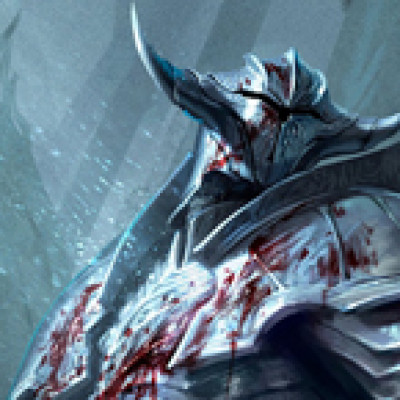Everfest is right around the corner, and with its carny festivities come all the knick-knacks and gimmicky souvenirs you would expect. In this article, we’ll talk all about Items: their role in the game, the expanding design space they occupy, which heroes can make the most use of them, strategies to get them in play, and much more. By the end of the article, you’ll be certified as one of Rathe’s resident artificers and master merchants.
An Iconic Mechanic and Design Space
Items occupy an iconic and important place in the design space that Legend Story Studios has explored with Flesh and Blood. As in other games, items typically represent the things you bring with you or find along the way to augment, supplement, or replace your own intrinsic capabilities. Some items- like potions- can be consumed; others, like amulets and other jewelry and trinkets, are meant to be worn or equipped, and feel like an extension of armor. This is no different in Flesh and Blood.


So far, Potions, Amulets, Talismans, and the singular Crazy Brew all generate a one-time effect at the cost of destroying the item. Once you use it, it’s gone. Additionally, all of the potions consume your action point just to put them in play. For those unfamiliar with the card type, an Item is simply put into play as an action, where it sits waiting to be used. These two design elements limited the impact Items had on the metagame in large. And now with Everfest, we've seen design adding a new guardrail- specifically, Items with prerequisites that must be met to activate their effects.
So far, LSS has designed their Item cards to pack some serious utility, with one major glaring weakness that has kept them out of most decks: Items can’t defend. Draw too many of them in one hand, and you’re going to take a beating before transitioning into a hamstrung attack phase. This intrinsic weakness is a significant hurdle to overcome for most heroes.
Collectors and Inventors
Not all heroes struggle to integrate Items into their strategies.
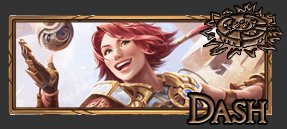
The class with the most direct investment in Items at the moment is Mechanologist. Here, they represent the artifacts, gadgetry, and inventions that help make up half of the Mechanologist’s identity. Mechanologist Items tend to be stronger than their generic counterparts, and utilize a Steam counter system to give them multiple uses. If you aren't recklessly pursuing a Boost strategy, chances are you're building up some form of board state via the class' uniquely long-lasting Items. Mechanologists also specialize in generating additional action points, which make it easier for you to spare a few for placing Items into play.
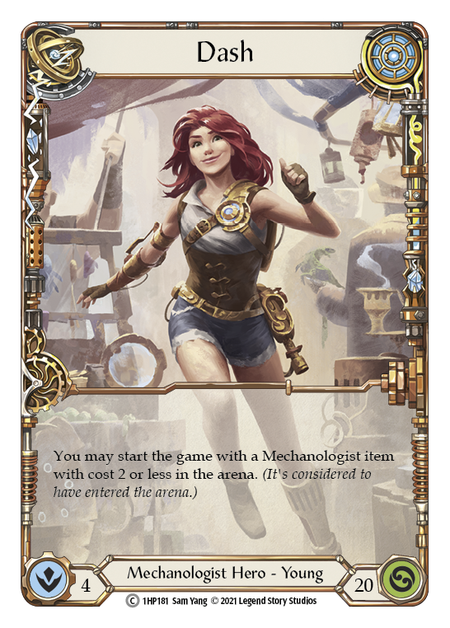
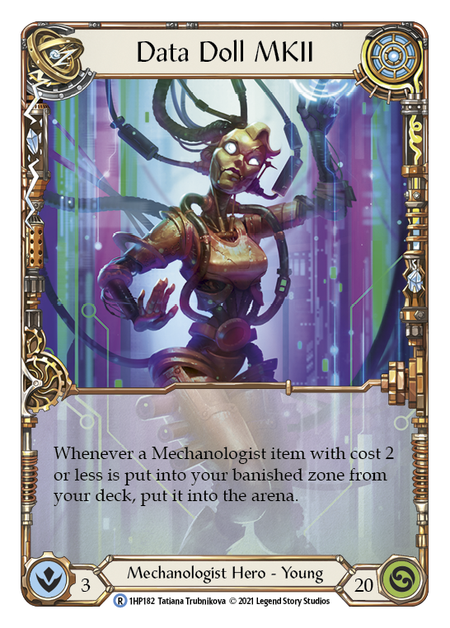
Data Doll and Dash both build their strategies around Items. In Dash’s case, she begins the game with a Mechanologist Item of her choice in play. One of her Specialization cards (Teklo Core) is an Item.
Data Doll MKII is still looking a long way from competitive, but her unique fusion of Boost and Item strategies make her a hero to watch. Everfest may very well may have given Data Doll the tools she needs to break out!
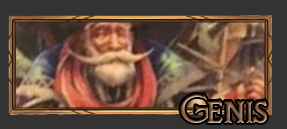
It’s clear that the Merchant class is beginning to explore this design space as well. Enter Genis Wotchuneed, the second Merchant hero in the world of Rathe. While he doesn’t directly interact with card-based Items in his hero ability, he does create Silver tokens, a complimentary Item token.
How does Silver play into Item strategies? In previous sets, we’ve seen mention of Copper, Silver, and Gold tokens. Crucible of War gave us the first of those, and now Everfest has introduced Silver tokens.
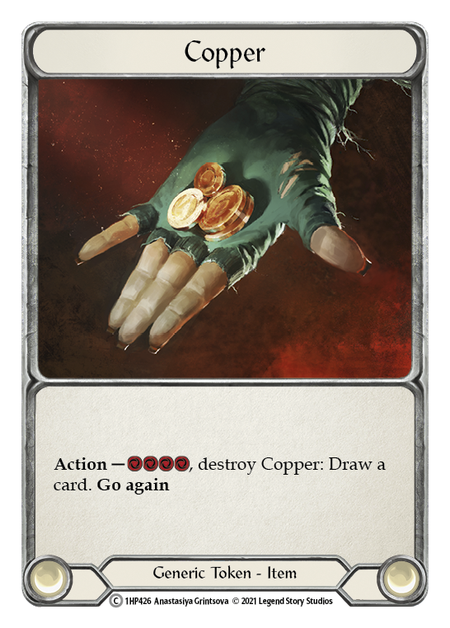
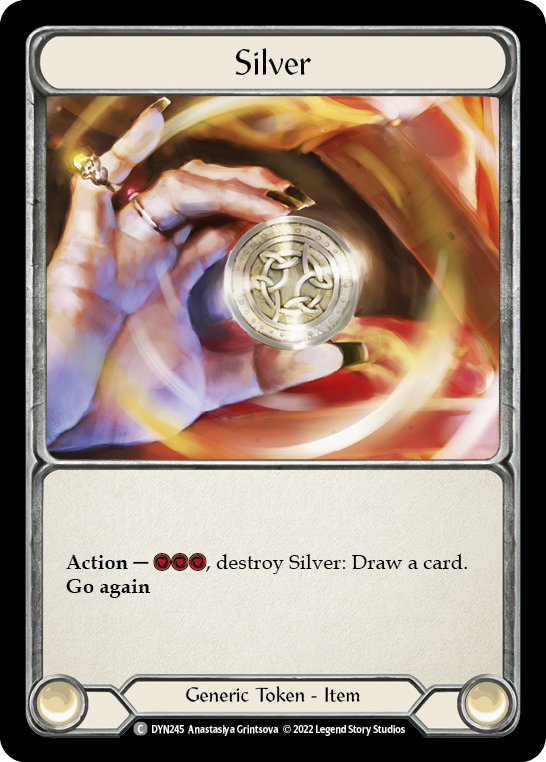
In and of themselves, coins haven't proven to be too compelling. Their inherent effects are quite tame, even inefficient. But we've begun to see payoffs for holding coins. Cash In is a prime example of the type of card that rewards players for building an engine that can create wealth through the generation of coins.
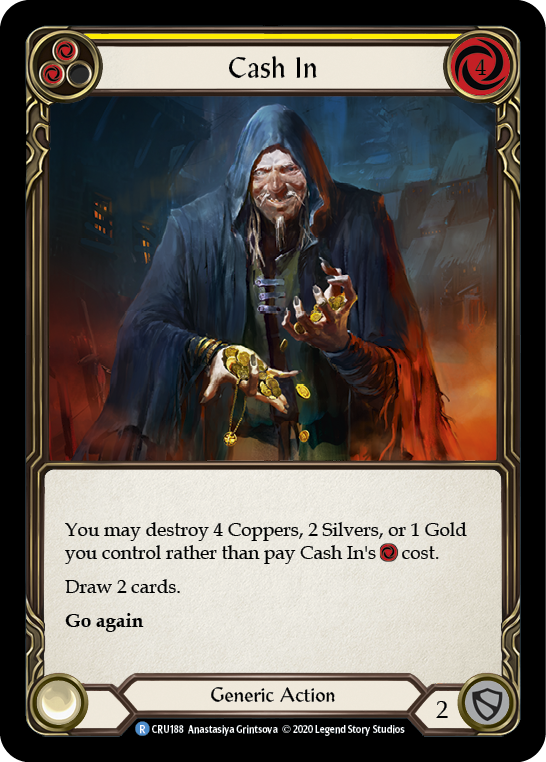
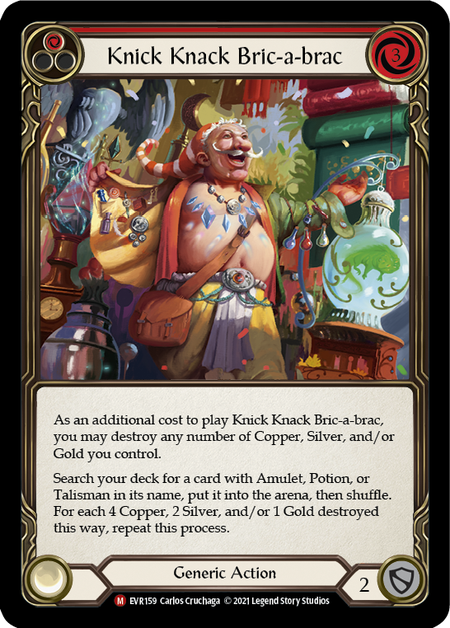
In the future, there will likely be more that these tokens can be spent on. Perhaps an action card that allows players to trade gold in to tutor up different cards from their deck and put them into hand or play.
Oh, wait… Knick Knack Bric-a-Brac does just that. If you have enough currency, you can even repeat the process and put a staggering number of Items directly into play. Knick Knack Bric-a-Brac contains some jank, but it's inspiring jank. Putting items directly into play bypasses several weaknesses: they don't spend time in your hand as cards that can't block, and they don't waste an action being put into play. It offers a compelling tutor package that should only grow stronger with time as more items are introduced to Flesh and Blood.
Other Attempts to Utilize Items
In most cases, it’s not worth it for heroes outside of Mechanlogist to pursue strategies that involve playing Items in the conventional, 'fair' way of declaring that you’d like to play a card from your hand, then paying its cost. They’re often not impactful enough to be worth the investment to play from hand, even in the case that the item has go again. How many decks have you seen that play Talisman of Dousing against classes that deal arcane damage? How many decks are running the new elemental amulets introduced in Tales of Aria? None of the top decks I’ve seen in the past few months.
But that's not to say it hasn't been attempted, nor that it's been unsuccessful.
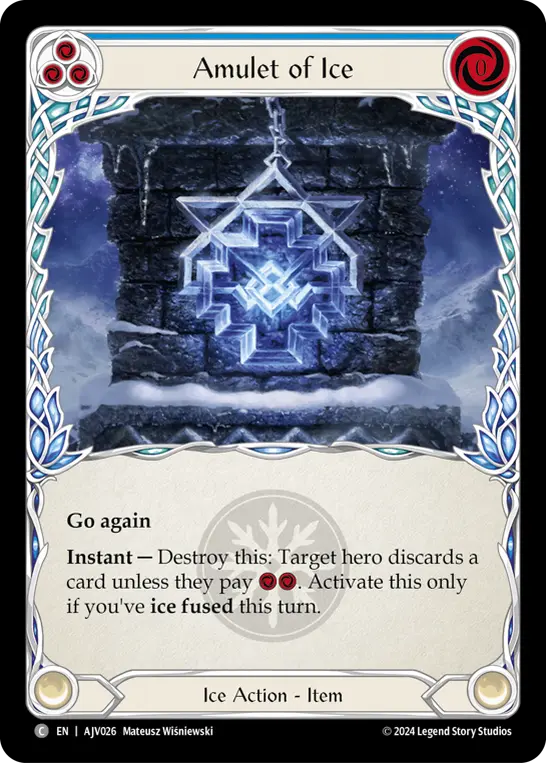
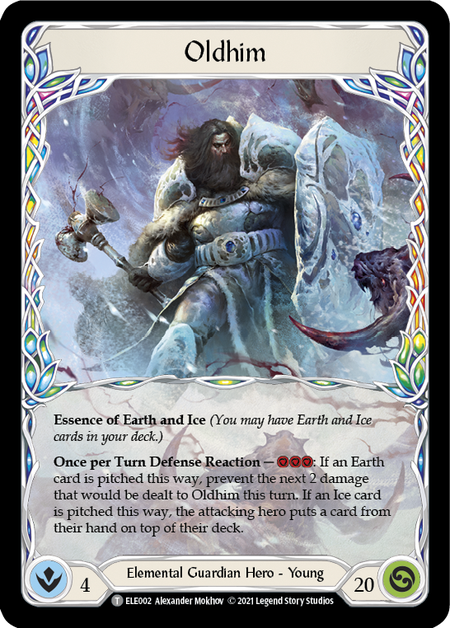
In my earliest iterations of Oldhim, I experimented with Amulet of Ice, able to steal some wins with the synergy of stockpiling my Amulets until I was ready to come in with a huge, fused Endless Winter. With two amulets in play at low life totals, stealing two cards from my opponent’s hand before they had to block Endless Winter often ended the game on the spot. But even with a blue pitch strip and the ability to use Amulet of Ice to pitch toward Winter’s Wail, the weakness of not being able to block with the item card ultimately led me to cut it in favor of Winter’s Bite, despite the fact that Winter’s Bite only blocks for two. Turns out, even a meager two defense matters immensely.

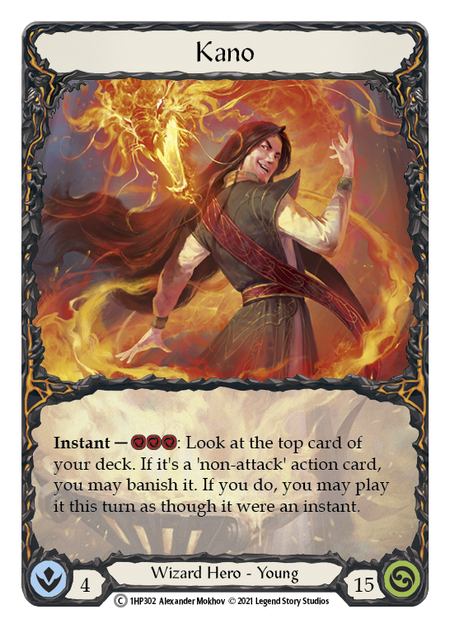
Kano has had great success with the likes of Energy Potion, thanks to his ability to play it off the top of his deck. Because Kano is playing cards at instant speed, he can also spare the action point necessary to place it into play. (We'll get to a new, exciting combo for an Everfest Item shortly.)
Knick-Knack Bric-a-Brac marks the first non-Mechanologist card that allows players to bend the rules by playing items in a way that’s 'unfair' in conventional terms. It’s the first card we’ve seen that may eventually help boost the relevance of item cards in decks outside of Mechanologist and Wizard- yet it requires investment in niche cards and strategies. Will it be compelling enough to exist outside of the scope of casual play or Ultimate Pit Fight?
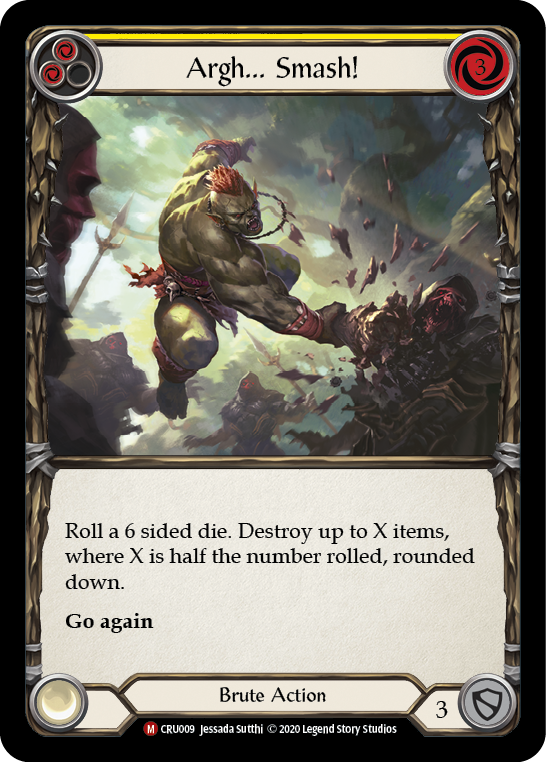
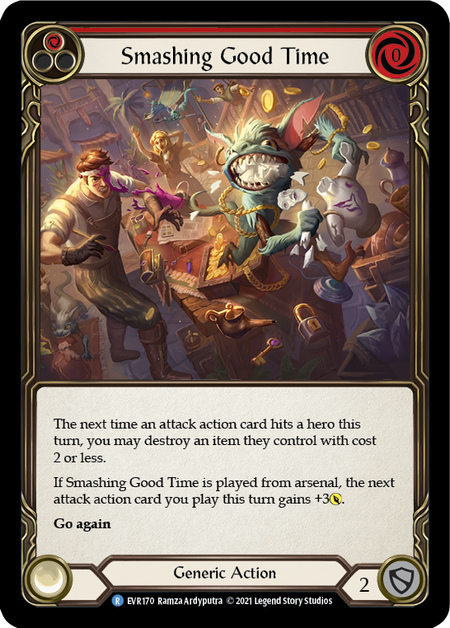
LSS Seems to think it might. Between Crucible of War’s Brute-exclusive Argh… Smash! and Everfest’s newly introduced Smashing Good Time, it’s clear that they are building some emergency pressure relief valves for the community, should Items start to become a more prominent part of the meta. Between this fact and that there are a ton of new item cards in Everfest, I believe Items will probably just become more relevant over time.
Everfest's Inventory
It’s interesting to see the design space that some of the new Everfest Items occupy. Like many Flesh and Blood set releases, it feels like we’re gaining individual puzzle pieces to LSS’s grand narrative for the game, months or even years ahead of when we’re supposed to. Many of these new cards will inevitably end up in bulk bins, left untouched and covered in dust- until they find new life in distant metas. It’s like some kind of hilarious inside joke that we won’t understand until LSS decides the time is right. "Do not open until..."
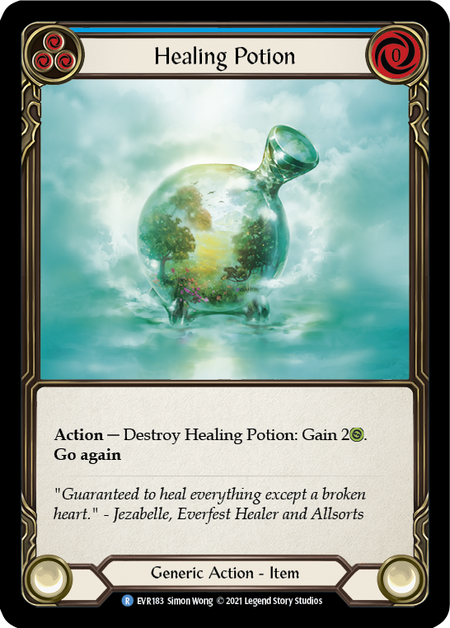
Healing Potion provides stored-up healing. Of course, it is one less than Sigil of Solace (Red) and can't be played at instant speed- but also gives you the ability to defer the healing to exactly when you need it without the investment of a card in your hand or arsenal. Another perk: it can be pitched for three resources, whereas red Sigil only pitches for one. I wouldn’t be surprised to see this occupying some space in certain decks, especially in Blitz where the healing here represents 10% of your hero’s life total.
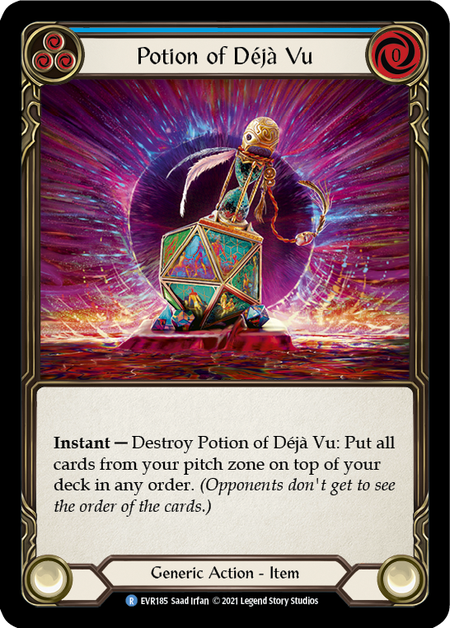
Potion of Deja Vu has some SERIOUS potential for Wizard. For those unfamiliar with the class, this potential line will look complex (because it is)...
- With Potion in play, plus three blues and a Tome of Aetherwind in hand, pitch the Tome to Crucible of Aetherweave.
- Pitch two blues to Kano twice, holding priority each time.
- Break Potion of Deja Vu in response to put Tome on top of your deck with two blues underneath it.
- Resolve the first Kano trigger. Banish Tome, then play it at instant speed to draw back the two blues- which will make the second Kano trigger free.
- By still having blues in hand, you can activate Kano again and have the resources to pay the costs.
While Potion of Deja Vu will almost certainly have the most potential in Wizard, it may be relevant in other classes as well.
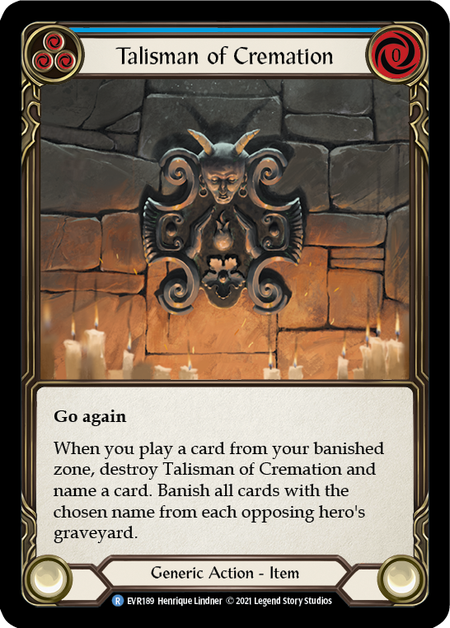
Talisman of Cremation occupies an interesting design space as a niche, situational tool to deal with graveyards. For now, it can help in Shadow mirrors between Chane/Levia players, or be socketed in by these heroes to help deal with control heroes’ reliance on Remembrance to recur powerful threats for the late game. Who knows how relevant it will be in the future?
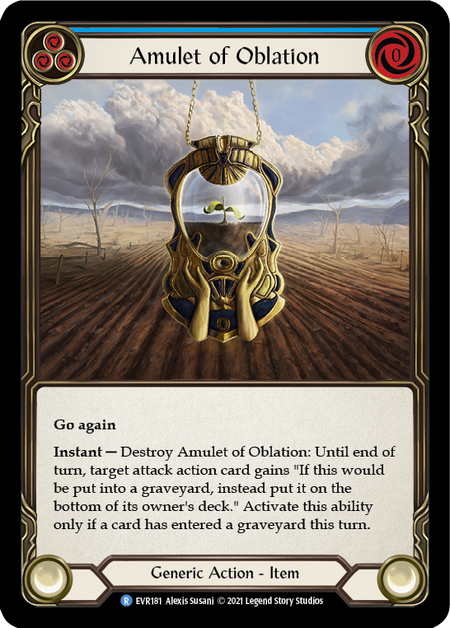
Amulet of Oblation offers some recurring threat density for powerful attack action cards. In limited formats, I would consider including this in my decks to get the most value out of the most powerful cards I opened or drafted.

Amulet of Assertiveness offers added aggression in the case that you are able to play an attack action card from your arsenal, or find some other way to attack and keep four cards in hand. Both interesting mechanics, but like many others, likely too situational to impact the immediate Everfest meta, barring any additional spoilers that may sway my opinion.
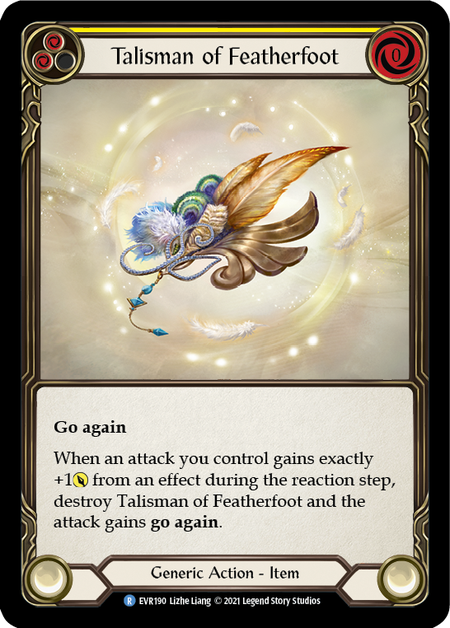
Talisman of Featherfoot is interesting, in that there are a few ways to give +1 to attacks during the reaction step. Situational on-demand go again like this can be powerful, but it is hindered by the fact that it is a mandatory trigger. Players may not decide to preserve the amulet trigger for a strategic turn. If they give an attack that already has go again +1 during the reaction step, too bad.

Amulet of Echoes and its powerful discard effect could become more compelling if certain card mechanics allow heroes to include more than the conventional 2-3 copies of certain cards in a single pitch color in their decks. The discard effect is powerful, but it’s significantly diluted by the fact that to play this card, your opponent would have already had to play two cards with the same name on the same turn AND pay the costs for those cards. Not good enough.
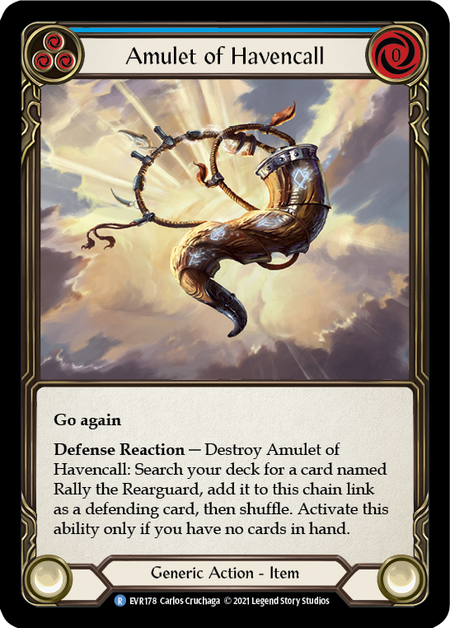
Amulet of Havencall, while benefiting from the blue pitch strip and go again, is limited in that it requires the inclusion of Rally the Rearguard- another mechanically unique but ultimately underutilized attack. This item functions more or less as an on-demand defense reaction, but does not allow you to discard a card from hand (unless you can draw cards at instant speed from your arsenal) to boost the defensive power of Rally the Rearguard.
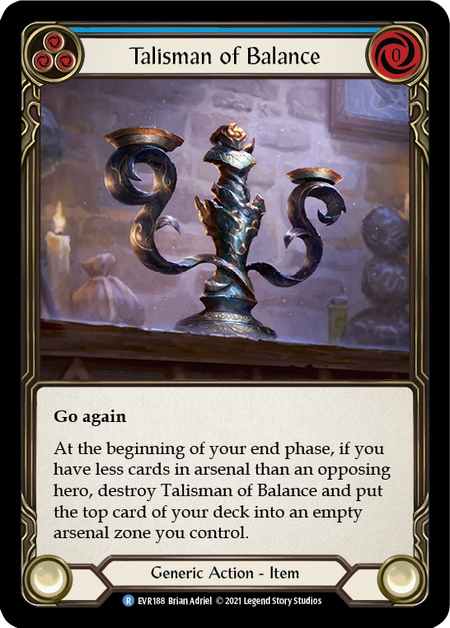
Talisman of Balance gives the option to capture card advantage and ultimately make up for playing the card in the first place- but it can yield unpredictable results. For example, you could arsenal a blue pitch card that’s really only in the deck for resource generation or blocking. This situation can be better avoided by pairing Talisman of Balance with effects like Opt. Again, this is an item that I’m much more inclined to play. Perhaps it could be used in a combo Knick Knack Bric-a-Brac deck to better generate reliable card advantage for other combos that may emerge.
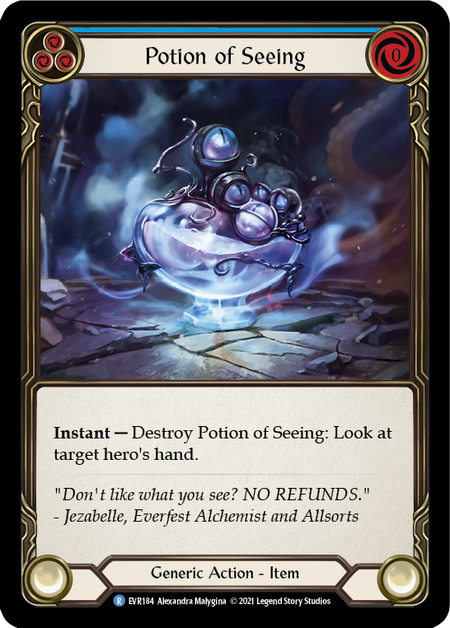
Potion of Seeing allows you to look at your opponent’s hand, but many TCGs have shown that this typically is an underwhelming mechanic by itself. There is certainly some value in mapping out your opponent’s hand and plotting your own maneuvers based on that information. But you’ll need to make sure you take a good look at everything in their hand and commit it to memory since there is no notetaking in Flesh and Blood. If you use this card and learn your opponent has a hand jammed full of defense reactions, maybe it makes a lot of sense to play the Command and Conquer you are holding. This is an Everfest item I will be watching. When played 'fairly', I don’t think it does enough, but it gets a lot more interesting as more ways are introduced to play the card 'unfairly'.
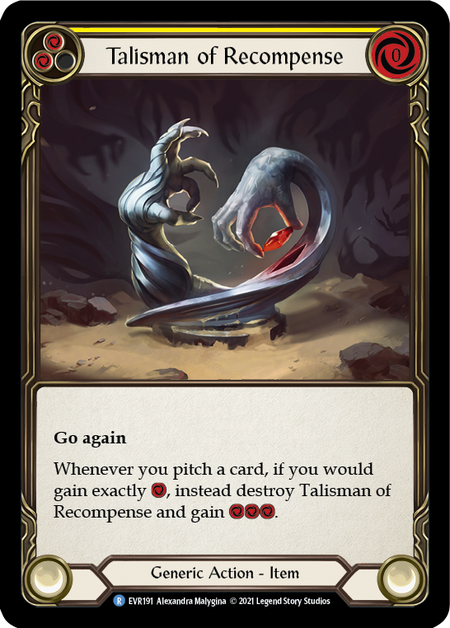
For the investment of a card, Talisman of Recompense can be used in a pinch to assist with resource generation in decks that tend to have a more aggressive pitch curve. Effectively turning a red pitch blue improves the consistency of aggro decks, yet does create some counter-synergy in that it is one less attack that you can send across the table. It is interesting that this item imitates Deep Blue, which would otherwise occupy a hero’s chest armor slot.
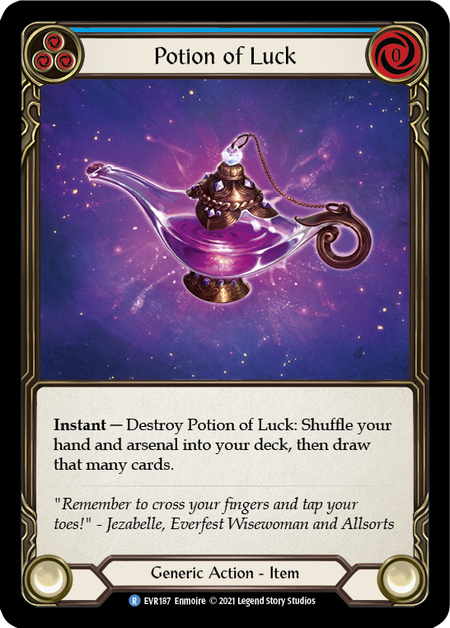
Finally, Potion of Luck provides an effect similar to Hope Merchant’s Hood, but in item form. This item also allows players to dump their arsenal slot to draw an additional card. While this effect is ultimately more powerful and potent than many other items, it does not come with the benefit of added go again (like all potions). If you can reliably play this out unfairly, the effect gets a lot stronger.
Wrapping Up Your Items
As LSS continues to explore the design space around Items, I would expect new mechanics, concepts, and strategies to emerge around them. I am hopeful that Items will eventually be more accessible and compelling to play for other classes in the game, and for reasons to emerge for players to invest in including them in their decks. Outside of the casual space of Flesh and Blood, everything in deckbuilding has an opportunity cost, and most items have never been able to overcome that barrier when they are played fairly in the vast majority of this game’s classes and decks.




